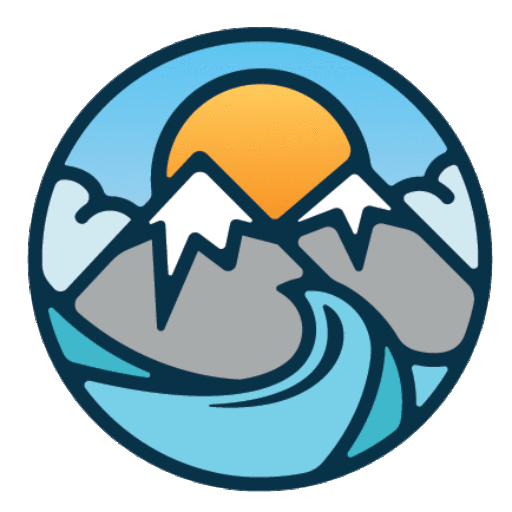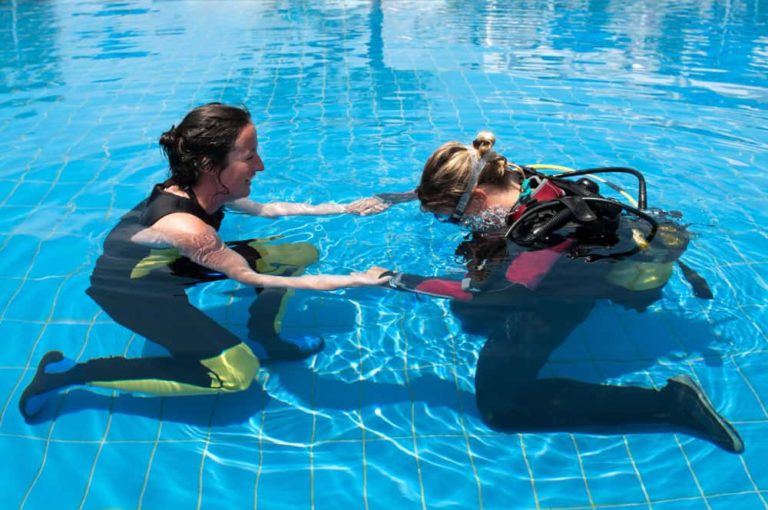This article will outline the best way to get a recreational dive certification. Learn what you need to consider before embarking on scuba lessons either at home or while on vacation for the first time and how getting scuba certified can set you up for a lifelong love of diving, wherever your travels may take you.
In order to dive safely, it’s important to learn the proper techniques and safety procedures.
Excess weight on a diver greatly affects buoyancy control and risks injury or death as a result of drowning in case of becoming unconscious underwater.
A diver’s buoyancy is a key factor in safe diving, allowing the diver to control their depth and orientation in the water.
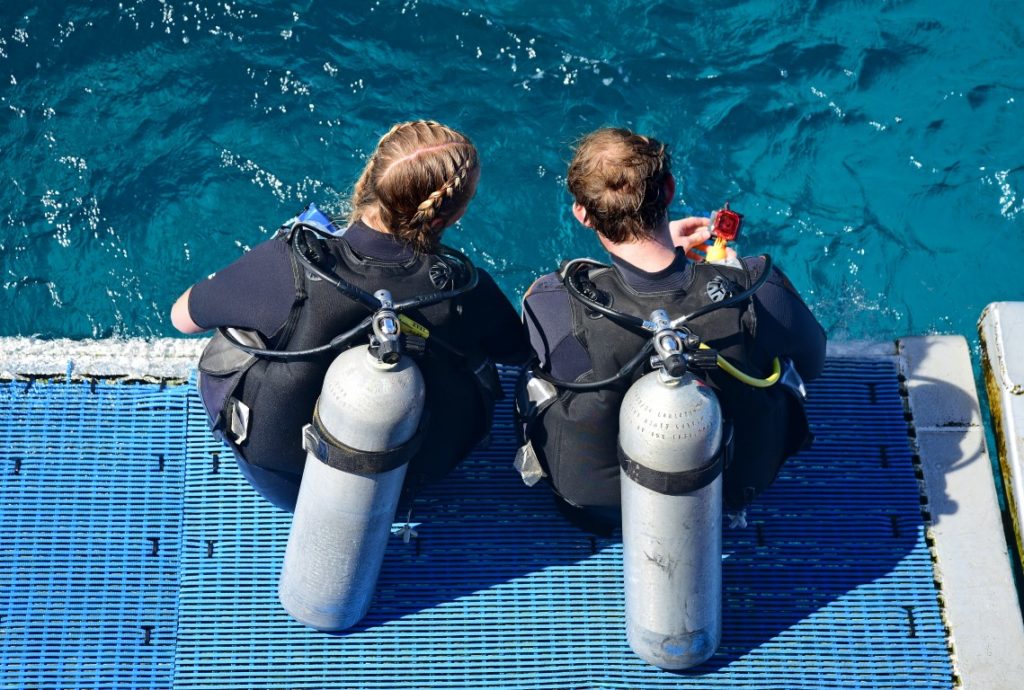
A diver must maintain neutral buoyancy while underwater for a prolonged period of time – this means that all parts of their body are weighted equally with respect to the amount of water they displace (the volume of space occupied by their body), and that they do not sink or float.
If a diver is carrying heavy gear, air tanks, or other weighty accessories, it will decrease their buoyancy because the extra equipment is displacing water from their body. This makes it more difficult to remain at depth for an extended period of time.
Table of Contents
What is Scuba Diving?
Scuba diving is defined as the controlled activity of breathing underwater with the use of a scuba set, which includes a mouthpiece, a regulator, and an air tank.
Scuba diving can be a perfect hobby for everyone and is beneficial as such. It’s enjoyable to do at home or take it on vacations.
You can benefit from scuba diving in a number of ways: it teaches you skills, improves your stamina, and helps maintain your physical well-being.
It is the dream destination for underwater adventurers. You can swim among fish for an extended length of time.
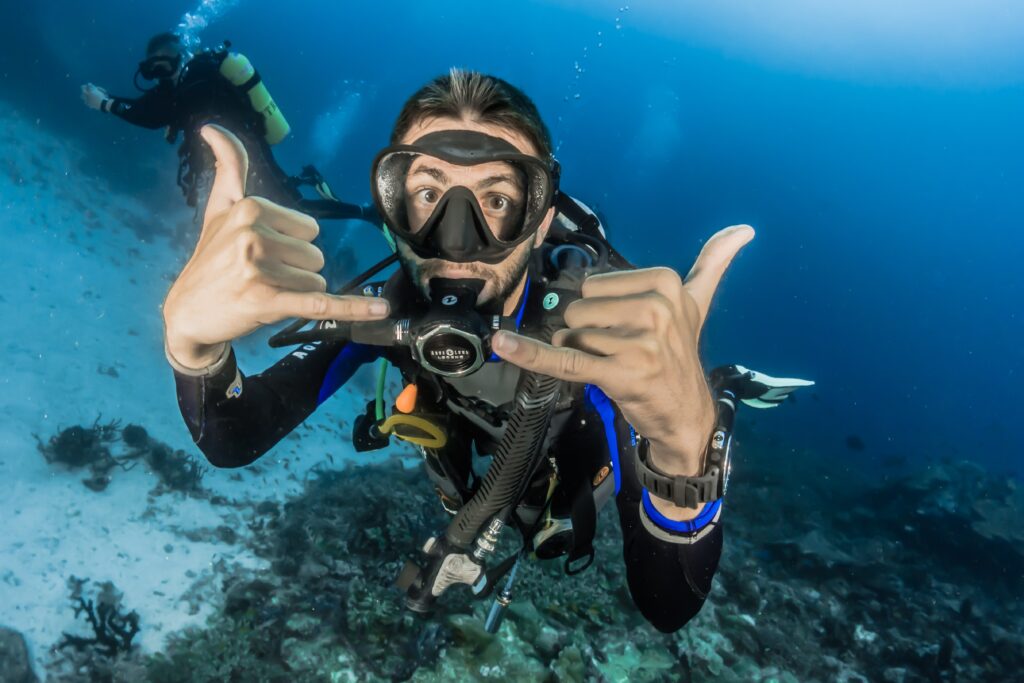
One essential part of a diver’s equipment is an inflatable vest, called a buoyancy control devices (BCD). This device allows the wearer to float near the surface and regulate their depth when swimming underwater.
Do I Need To Get Scuba Certified?
Scuba diving is not dangerous if done right. But following training guidelines and teaching new divers is essential to keep a safe environment.
If you’re eager to learn how then the time is now. There are plenty of certification courses in your city or online for recreational divers, and not getting one will only hurt yourself plus those spending time near water.
Should I Choose PADI or SSI?
PADI and SSI are two of the major scuba certifying organization. When you take a scuba diving certification course, it is their curriculum that you learn, taught by professionals at dive centers and resorts. They share a common standard of quality and practice.
Getting scuba certified will make you safer and it will let you explore the ocean and see all the creatures under the water.
Scuba certification is important for diving, but it doesn’t just teach you about the physical aspects of scuba. You will also learn the fish and coral in your area, which can help when you’re out on a dive or snorkeling trip.
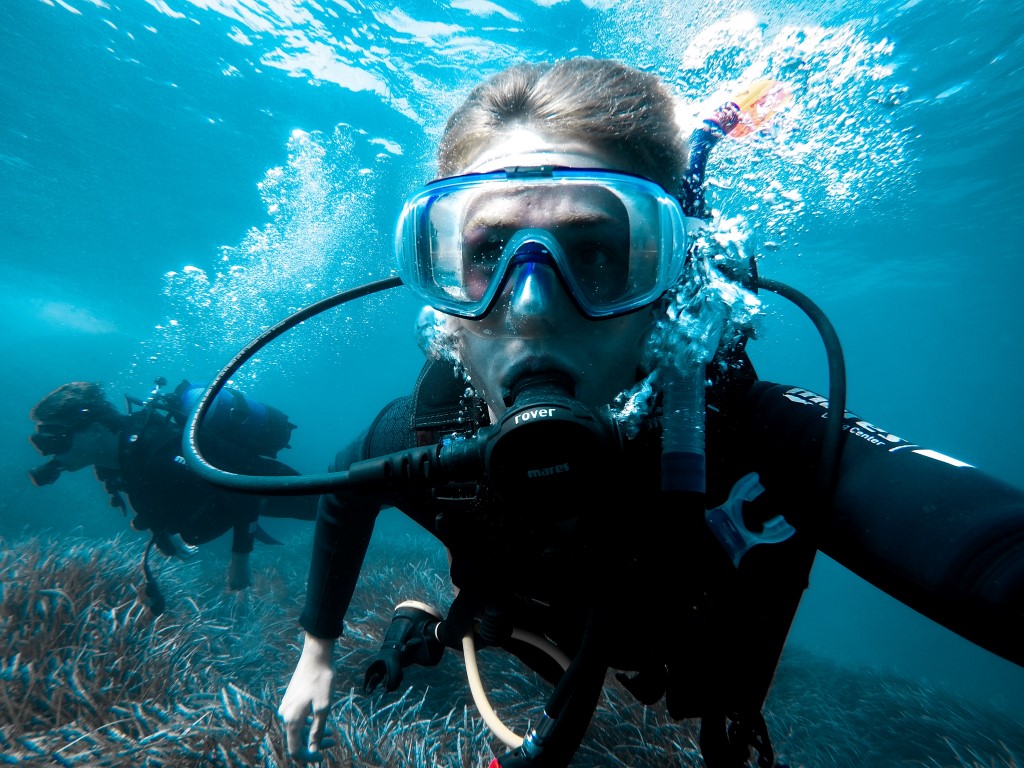
Can I Dive Without Getting Certified?
Yes, but it’s offered on a trial basis with supervision. This is also known as Discover Scuba Dive. There are also non-certification programs offered by resorts and diving operators for those who are unsure how they might react to wearing scuba gear in the water.
Some people are nervous about being underwater.
Scuba diving centers offer discovery dives that allows you to try on scuba before you decide to take a full open-water course.
A discovery dive does not count as your certification, but it will make the first few open water dives much easier and more enjoyable for you.
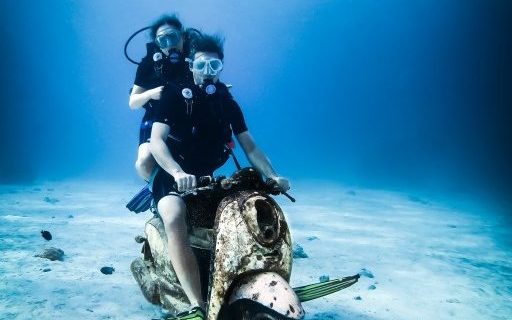
Scuba certification can be terrifying, but try-dives in the shallow end of a pool may offer enough enticement to last for many people.
How To Obtain My Open Water Certification
It’s important to be comfortable in aquatic conditions prior to getting into the water. To ensure a safe, enjoyable experience as an alien guest in another ecosystem, it’s necessary to understand the basics of ensuring safety and enjoyment.
Open water diving involves diving in an environment outside pools or tanks. That can be the ocean, lakes, or calm rivers
You need to fill out the medical form that declares that you are physically fit for diving before you start. If you have a medical condition, your doctor or a physician will need to sign off. This will cost you about $50.
There are different certifications, the PADI open water is the most recognized among divers worldwide. Along with all certifications teaching a similar skill set, there is not one that is better than the other.
During the Covid-19 pandemic, most of the dive centers would offer e-Learning for the students so they could start their theory as soon as possible. When borders reopen, students would be able to travel immediately for their open water training. You’ll need to ask your instructor before you start whether they offer certified scuba programs overseas and in the local waters.
What Will I Learn During The Scuba Course
Getting your scuba diving certification is achievable in a short amount of time. E-learning courses allow you to view what theory lessons are needed and take them at your own leisure.
PADI also has a fast-track course where you can get your OWD card in just 3 days. The certification course for 3 days is quite tiring, and you may not have much time to pursue other activities for the 3 days that it will take.
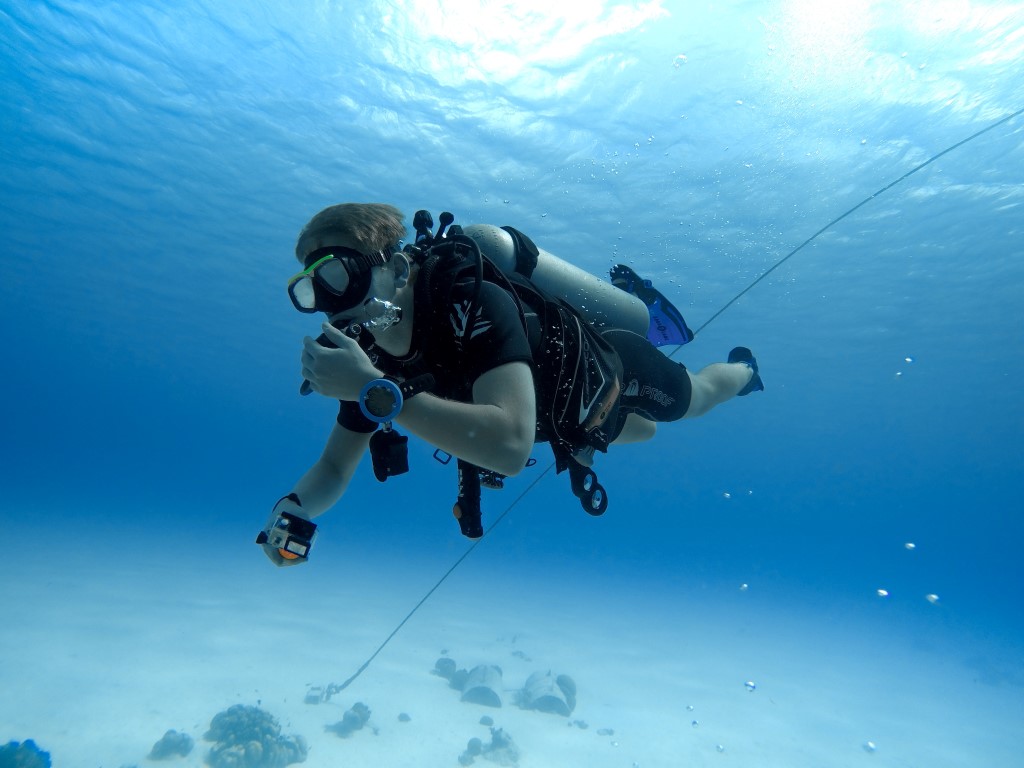
Many Scuba certification courses now offer lessons online, which can be a convenient option for people who don’t have time to schedule traditional classroom hours. Just like obtaining a driver’s license, the theory portion of these courses is easily downloaded and involves reading through some material online and taking practice quizzes.
Scuba diving lessons consist of a 3 modules certification.
- Knowledge development on Theory: either through e-learning resources or in a classroom.
- Confined water dives: in a pool or in pool-like conditions with scuba gear, and
- Open water dives: this includes 4 dives the student can try only after successful completion of the previous 2 sections.
The open water course will train you:
Dive Flexible Skills
- Skin Diving: A vertical dive from the surface in water too deep in which to stand (without excessive splashing or arm movement).
- Equipment Preparation and Care: Assemble and disassemble the scuba kit five times during confined water training.
- Disconnect Low-Pressure Inflator Hose: Have student divers disconnect the low pressure hose from the inflator in shallow water
- Loose Cylinder Band — During any Confined Water Dive, have student divers demonstrate resecuring a loose cylinder band in the water either at the surface or underwater.
- Weight System Removal and Replacement
- Emergency Weight Drop
Dive 1 Performance Requirements
At the surface:
- Put on and adjust mask, fins, snorkel, BCD, scuba kit, and weights with assistance – using proper lifting techniques.
- Participate in a predive safety check.
- Inflate/deflate the BCD using the low-pressure inflator in shallow water.
Underwater in shallow water:
- Breathe compressed air by breathing naturally, without breath-holding.
- Clear a regulator using both the exhalation and purge-button methods, then resume breathing from it.
- Recover a regulator from behind the shoulder.
- Clear a partially flooded mask.
- Breathe from an alternate air source supplied by another diver for at least 30 seconds. Underwater:
- Descend at a controlled rate into the water too deep in which to stand, equalizing the ears and mask.
- Swim with scuba equipment while maintaining control of both direction and depth.
- Locate and read the submersible pressure gauge and signal whether the air supply is adequate or low based on the gauge’s caution zone and/or an assigned supply limit.
- Recognize and demonstrate hand signals.
- Ascend using proper technique.
- Stay within reach of a buddy. At the surface in water too deep in which to stand:
- While positively buoyant, breathe from a snorkel or regulator while swimming facedown.
- After the ascent, keep the mask on and continue breathing from the regulator while using the low-pressure inflator to attain positive buoyancy.
- Deflate the BCD, then orally inflate it until positively buoyant.
Dive 2 Performance Requirements
At the surface:
- Plan dive.
- Put on and adjust mask, fins, snorkel, BCD, scuba, and weights with a buddy – using proper lifting techniques.
- Perform the buddy predive safety check.
- Demonstrate appropriate deep-water entry.
- Adjust for proper weighting – float at eye level at the surface with no or minimal air in the BCD and while holding a normal breath.
- Clear a snorkel using the blast method, then resume breathing through it without lifting the face from the water.
- Exchange snorkel for regulator and regulator for snorkel repeatedly (at least two exchanges) without lifting the face from the water.
- Swim at least 50 meters/yards while wearing scuba, breathing through a snorkel, and staying close to buddy.
- With a buddy, descend in water too deep in which to stand using the five-point method, primarily using the BCD for buoyancy control.
- Use low-pressure BCD inflation to become neutrally buoyant. Gently rise and fall in a controlled manner, during inhalation and exhalation.
- Clear a fully flooded mask.
- Remove, replace and clear a mask.
- Breathe without a mask for at least one minute.
- Respond to air depletion by signaling “out of air.”
- Indicate remaining air supply within 20 bar/300 psi without rechecking the SPG.
- Ascend using the five-point method, primarily using the BCD for buoyancy control.
- Exit using the most appropriate technique. (Buddy assistance allowed.)
Dive 3 Performance Requirements
At the surface in water too deep in which to stand:
- Demonstrate appropriate deep-water entry.
- With a buddy, perform a weight check and adjust for proper weighting.
- Demonstrate the cramp release technique for self and buddy (at the surface or underwater). Underwater:
- With a buddy, descend using only a visual reference in water too deep in which to stand, using the point method.
- Hover using buoyancy control for at least 30 seconds, without kicking or sculling.
- While neutrally buoyant, swim slowly in a horizontal position to determine trim. Adjust trim, as feasible, for a normal swimming position.
- Respond to air depletion by signaling “out of air” and securing and breathing from an alternate air source supplied by a buddy. Continue for at least one minute while swimming, surface and inflate the BCD orally.
- Supply air to another diver using an alternate air source.
- Simulate a controlled emergency swimming ascent by swimming horizontally or diagonally for at least 9 meters/30 feet while emitting a continuous sound.
- Indicate remaining air supply within 20 bar/300 psi without rechecking the SPG.
Dive 4 Performance Requirements
At the surface in water too deep in which to stand:
- With a buddy, perform a weight check and adjust for proper weighting and trim.
- Perform a tired diver tow for 25 meters/yards.
- Remove, replace, adjust and secure the scuba kit with minimal assistance. Underwater:
- With a buddy, descend in water too deep in which to stand using the five-point method and use buoyancy control to stop the descent without contacting the bottom.
- With a buddy, swim over a simulated environmentally sensitive bottom while maintaining buoyancy control.
- Orally inflate the BCD to hover for at least one minute, without kicking or sculling.
- Breathe effectively from a simulated free-flowing regulator for at least 30 seconds.
- Swim without a mask for at least 15 meters/50 feet, then replace and clear the mask.
- Indicate remaining air supply within 20 bar/300 psi without rechecking the SPG.
- Make a five-point ascent from above a simulated environmentally sensitive bottom without contacting the bottom.
Dive 5 Performance Requirements
Underwater:
- Remove, replace, adjust and secure the scuba kit with minimal assistance in water too deep in which Open Water Diver Course 61 to stand, without losing control of buoyancy, body position, and depth.
- Remove, replace, adjust and secure all or part of the weight system without losing control of buoyancy, body position, and depth. With weight belt and weight integrated BCD – on the bottom in water too deep in which to stand. With any weight system that requires reassembly after weights are removed – in shallow water.
- Indicate remaining air supply within 20 bar/300 psi without rechecking the SPG.
- Complete a simulated dive – Minidive – including
- Plan dive with a buddy.
- Make an entry and exit.
- Do a weight and trim check.
- Perform a five-point descent.
- With a buddy, a practice previously learned skills with emphasis on neutral buoyancy, hovering, and swimming.
- Demonstrate awareness and make efforts to avoid contact with the simulated sensitive bottom and fragile aquatic organisms.
- Respond correctly to at least one, but not more than three, of these simulated situations: leg cramps, out of the air – share air, freeflow regulator, mask flooded or off, regulator dropped from the mouth, BCD inflator failure, and buddy separation.
- a five-point ascent with a safety stop at the planned time limit or designated ascent pressure.
Once you have completed the required training and passed your certification, it will be sent within 1-2 days in the form of an email.
Can Kids Go Scuba Diving?
The answer is, of course! But the thing to remember is that companies are not keen on taking children under ten or eleven years old out on dives because they can be difficult to rescue in an emergency. However, most operators will gladly take your whole family at any age.
Scuba diving can be a challenge for kids that don’t listen. Never compromise safety because of a child’s optimism.
Children between the ages 10 and 14 can get a junior scuba diving certification, as long as they are able to understand course materials and have successfully completed some basic swimming lessons.
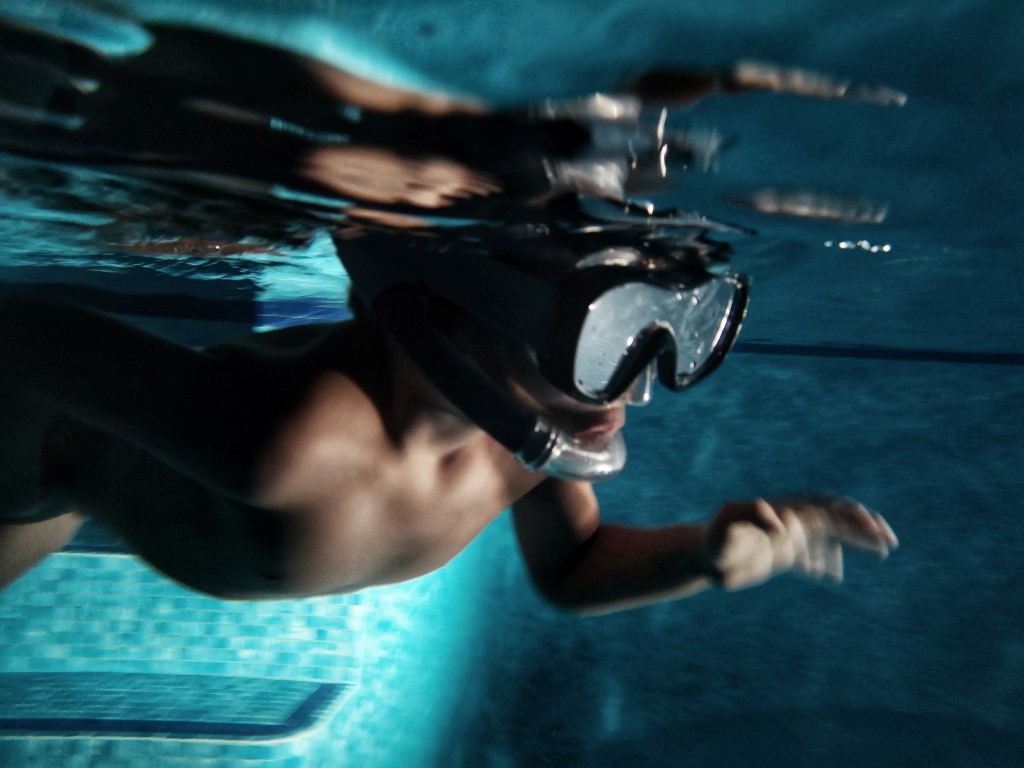
PADI’s Bubblemakers program gives kids as young as 8 years old the chance to learn scuba in a controlled space, so parents can join at their own pace.
By never taking out more loans than you are paying back faster than they come due, you invest all your time and energy into building up equity in whatever you purchased with those
What Does Scuba Certification Cost?
When researching and planning for scuba lessons, the cost of training can vary depending on which country you are located in. Spreading your certification over two days or more will increase the cost but is often recommended for first-time divers to avoid any health risks that may arise from a lack of oxygen or depth.
We have another post that goes deeper into the cost differences on location of learning and if it is from a boat or land.
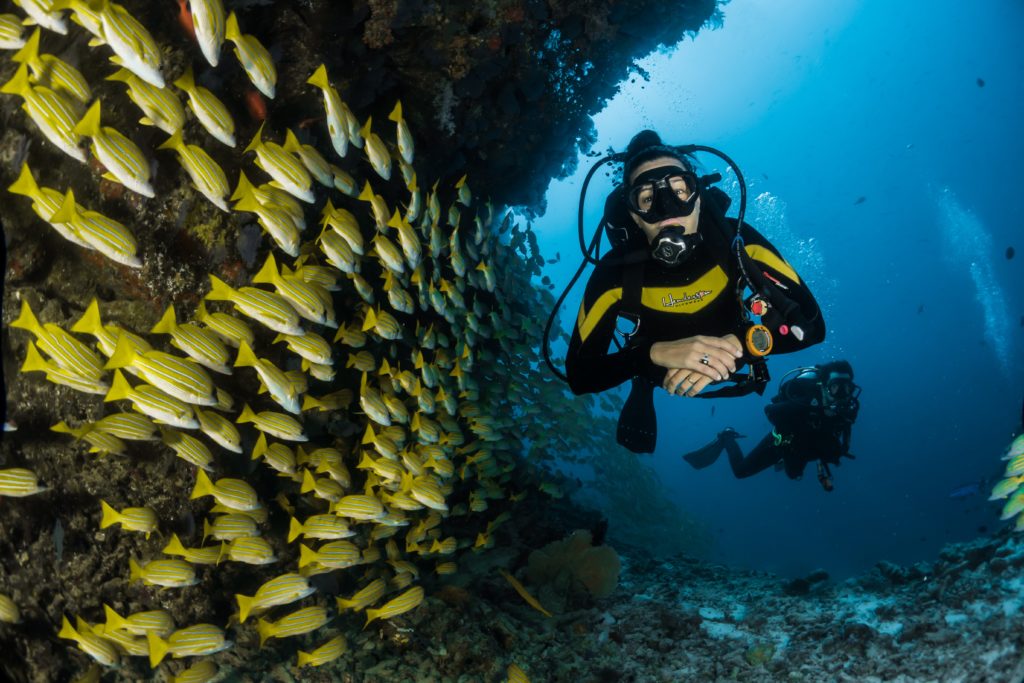
PADI
In 1966 two friends founded PADI instructor from their living room and it has since become the world’s largest scuba certified organization. It is still owned by those original founders, who have now sold a majority stake in it for $700 million to an endowment fund.
The most popular recreational diving certification program, PADI (from the original scuba dive training program), has performed legions of divers.
The company was purchased by a rich family in 2017 and hasn’t changed much since then either. This agency checks all divers against their safety standards to ensure they are safe.
SSI
SSI is the largest store-oriented training provider. Scuba Schools International abbreviation represents Scuba Schools International. SSI professionals have to have affiliated with dive centers.
Thus the instructor of the SSI cannot be an independent teacher.
This company has a great system of online learning & an interesting training method diving instructors can integrate their experience into their teaching methodology. It has a presence all around the globe.
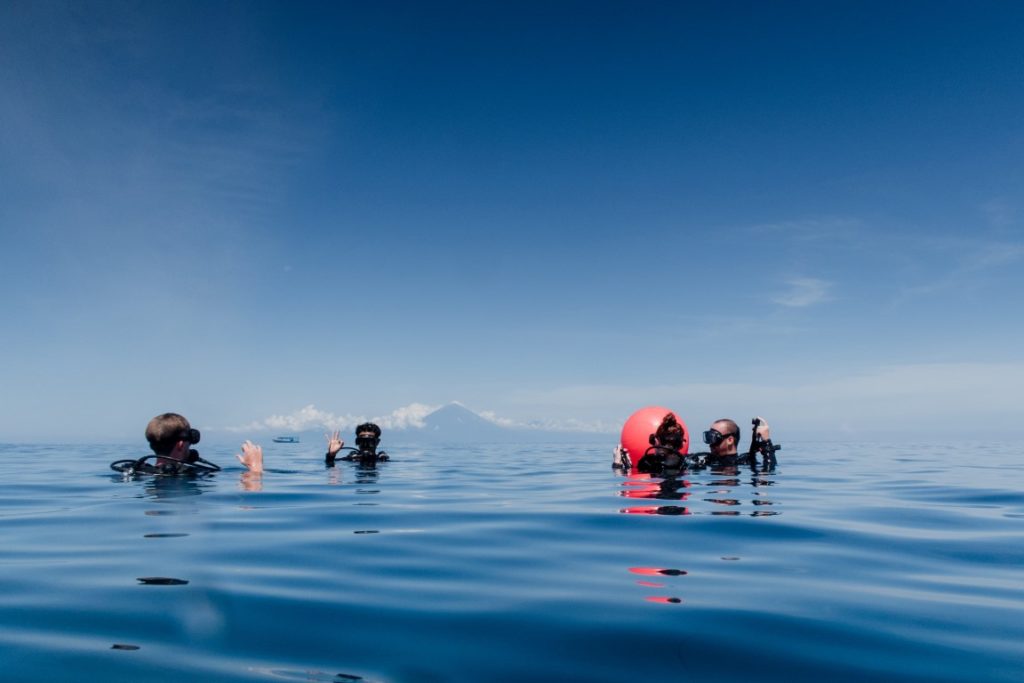
The dive industry is competitive and if you want to succeed, safety and a lack of accidents are crucial.
Debating between two or more diving schools or destinations? To choose, begin the search for a dive center near you (or your desired location).
Always use your judgment and intuition. Speak to the instructor in question – if unsure about trustworthiness, go elsewhere!
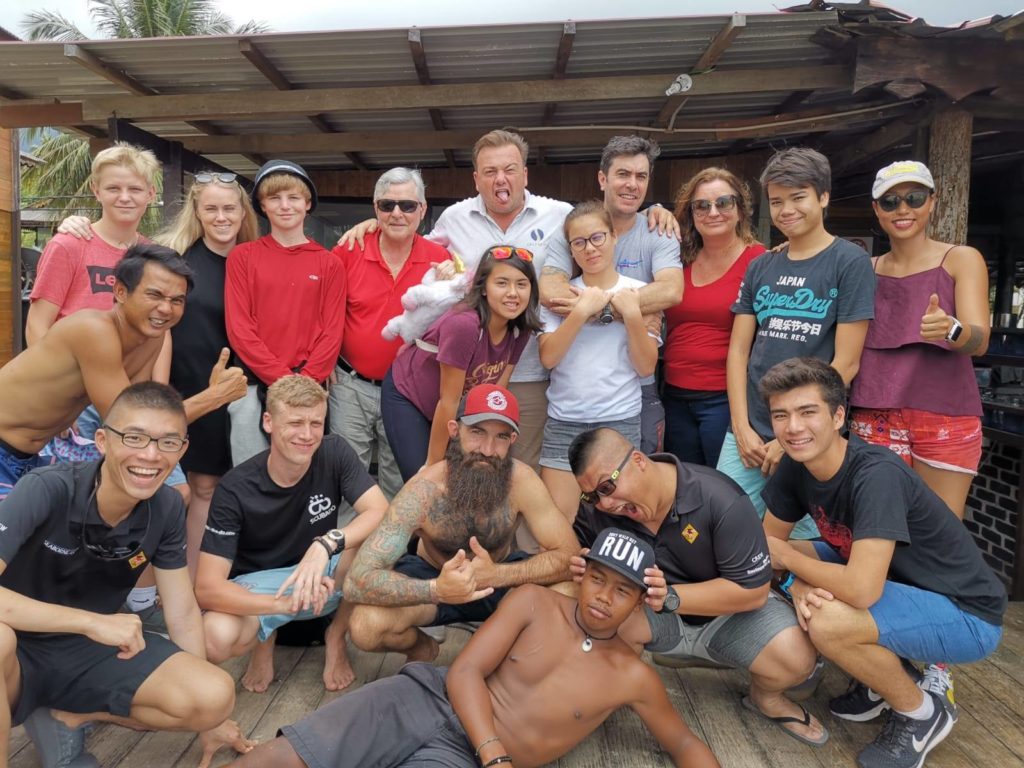
While the scuba diving certification course is usually seen as a simple and impersonal completion of requirements, there are those who establish lifelong connections to both their dive instructors and newfound family on land.
Certified, What’s Next?
Now that you’re a certified diver, you can either choose to enjoy recreational diving or advance your knowledge to an advanced open-water diver.
Explore the underwater world and you can travel to amazing destinations and swim with whale sharks around lush coral reefs where the adventure never gets old.
Upon completion of certification, divers receive a scuba certified card and you will be able to dive for not more than 18 meters. Your scuba diving certification never expires.
Bear in mind that divers can only do a maximum of four dives a day, with the first couple usually close in succession and separated by an hour for decompression.
The Cost of Recreational Diving / Fun Diving
The cost of recreational diving courses varies greatly depending on your region and whether you pursue coursework with help from a dive school or another experienced diver.
When you go diving, it’s better to find a dive site near the shore than one from an operator on their boat.
Diving in the US with a tank is relatively cheap, but if you want to diversify your dives you may need to invest more.
Luckily diving clubs exist all around the world which makes home-grown travel packages ideal.
Diving trips cost anywhere between $25-$100 depending on equipment. The cheapest trips are often shorter and involve boat-only traveling, while the most expensive may entail a long distance by car or ferry.
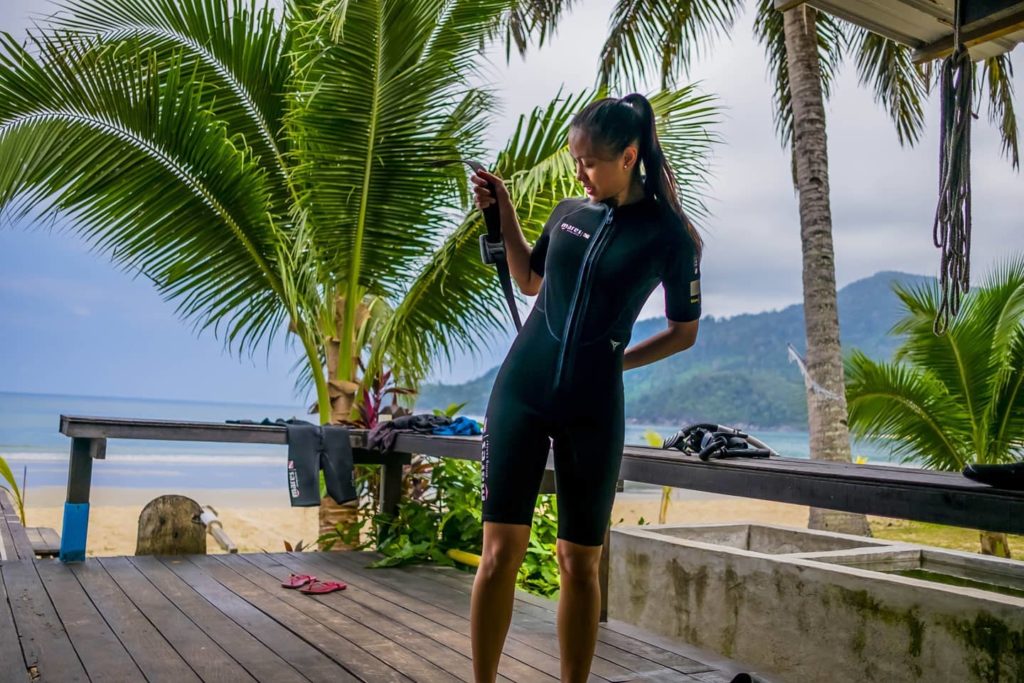
Should I Get My Own Scuba Equipment?
You may want to wait on buying scuba diving equipment until after taking two open water dives. Scuba dive shops always provide rental gear for those in a lesson, and this usually provides potential customers with insight as to what they want to purchase later.
However, many people are tempted to buy their gear and gadgets ahead of time. Since scuba lessons will introduce you to the wonderful world of scuba equipment and diving gear, when you get your certification it’s important not to purchase anything before then.
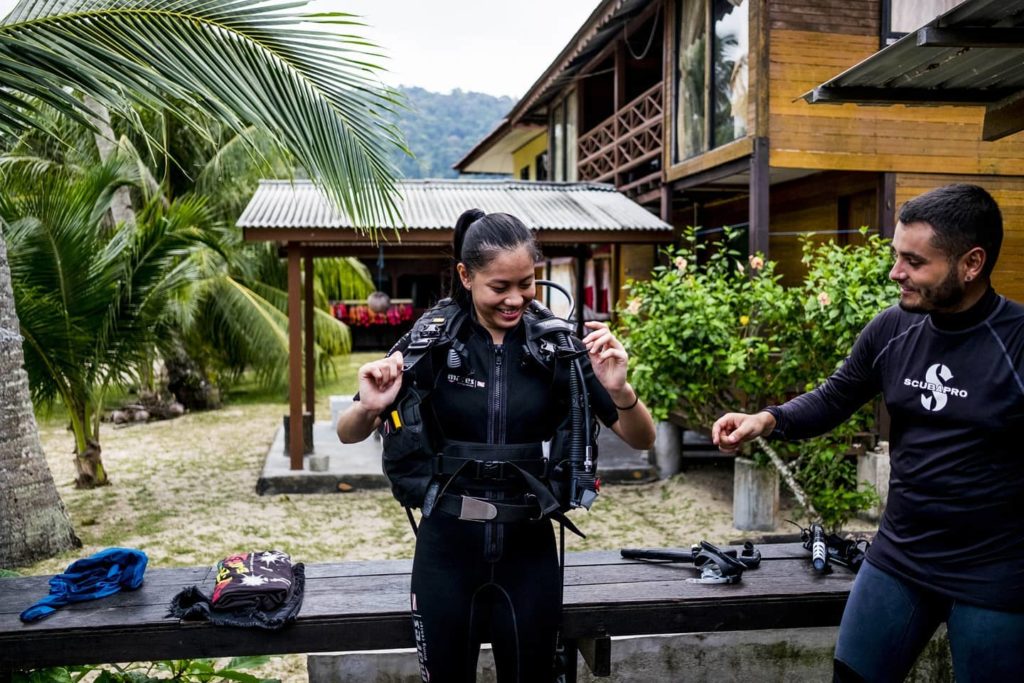
Purchasing quality fins and a mask will make your experience enjoyable since you can also use them for snorkeling. normally you would able to get a discount from the dive shop that you trained on.
Underwater photography can be a great way to get your share of pictures seen, but you should wait until you are actually able to dive before buying an underwater camera. You can always take pictures of the amazing things you see while snorkeling or exploring other underwater destinations for now.
Dive computers are becoming more and more common in the open water recreational diving community. We recommend beginner divers get their own dive computer as it’s not recommended to share with a buddy or dive instructor. Alternatively, you can also use the traditional dive tables to plan your diving.
The great thing about having your own dive computer is the accuracy of the dive it captures. Unless you’re obsessive, most people won’t experience this because they don’t know how to use the features and understand what the numbers mean. But if you do want those accurate reports, a personal computer can give you peace of mind when diving.
Scuba divers need a specific type of gear to enjoy their time underwater. Here’s an overview of some key equipment that is necessary for the pleasure dive experience.
- A mask
- Fins
- A regulator
- A BCD (Buoyancy Control Device)
- A wetsuit (to stay warm)
- A weight belt to help descent
After diving in the ocean, rinse off all equipment with fresh water. You want to be sure your gear is taken care of so it lasts and always functions as you need it to. Get your regulator serviced every few years at a scuba shop.
It is recommended that those with no experience diving wait to purchase a scuba set until after they have gone through at least some of their open water course.
What is The Safety Concerns?
- Best to wait 24 hours to fly after diving to lower your risk of decompression sickness.
- Shouldn’t dive if you are pregnant, or have asthma, severe allergies to seafood, or have a history of kidney stones.
- Shouldn’t scuba dive if you are taking the following medications: Warfarin (blood thinning medication article to find out more about diving if you have asthma, severe allergies to seafood, or a history of kidney stones.
- Shallow water blackout can occur when you are in deep water and ascend too quickly.
- Shouldn’t scuba dive to depths greater than 130 feet/40 meters
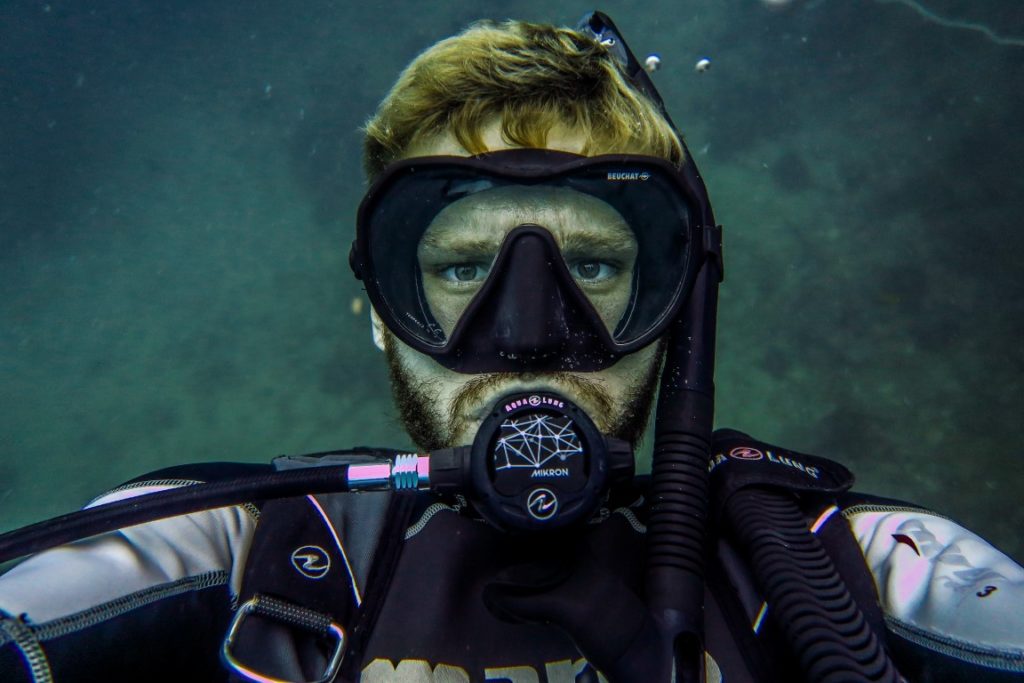
I have short-sighted. Can I wear glasses when diving?
While it’s not possible to wear your mask during scuba diving, you can have a prescription dive mask or wear contact lenses.
How safe is scuba diving?
Taking care of your safety while scuba diving is important. Though the most common recreational form of diving, there are still risks to consider – like always knowing where you can surface for fresh air and having a buddy nearby with whom to communicate.
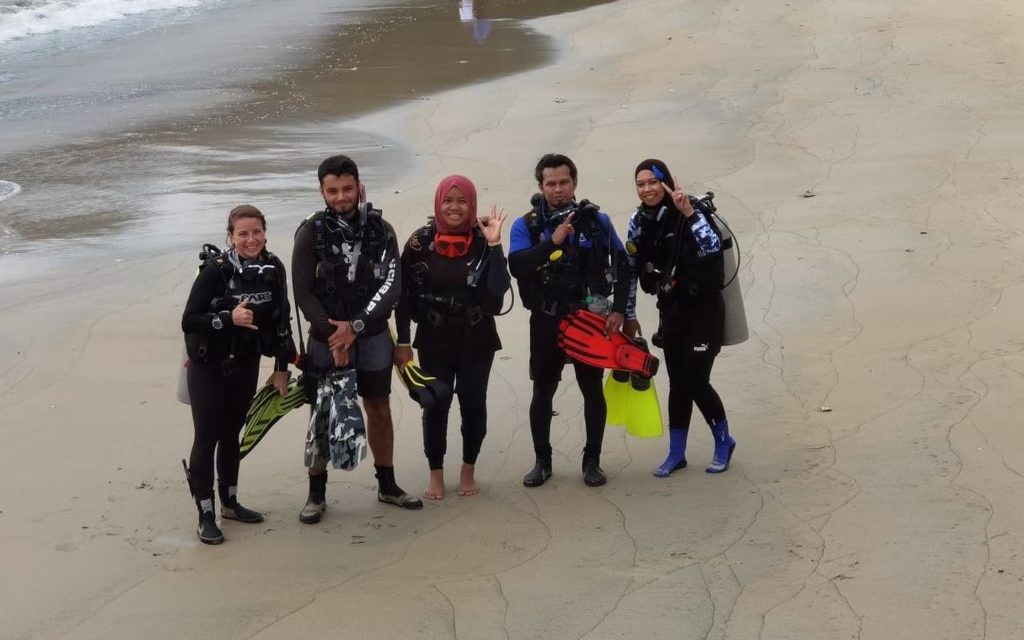
Diving is found to be safer than both driving and skydiving, with the Divers Alert Network (DAN) estimating that there are fewer than 2 deaths for every million recreational dives.
Risks while scuba diving can be mitigated by following the rules for procedure and protocol. The leading cause of mistakes is not beginner divers making bad judgment calls, but rather experienced divers failing to follow protocols.
Diving with certification is a great way to start diving and stay safe while you do so. Remember the regulations your training outlined to ensure a successful trip.
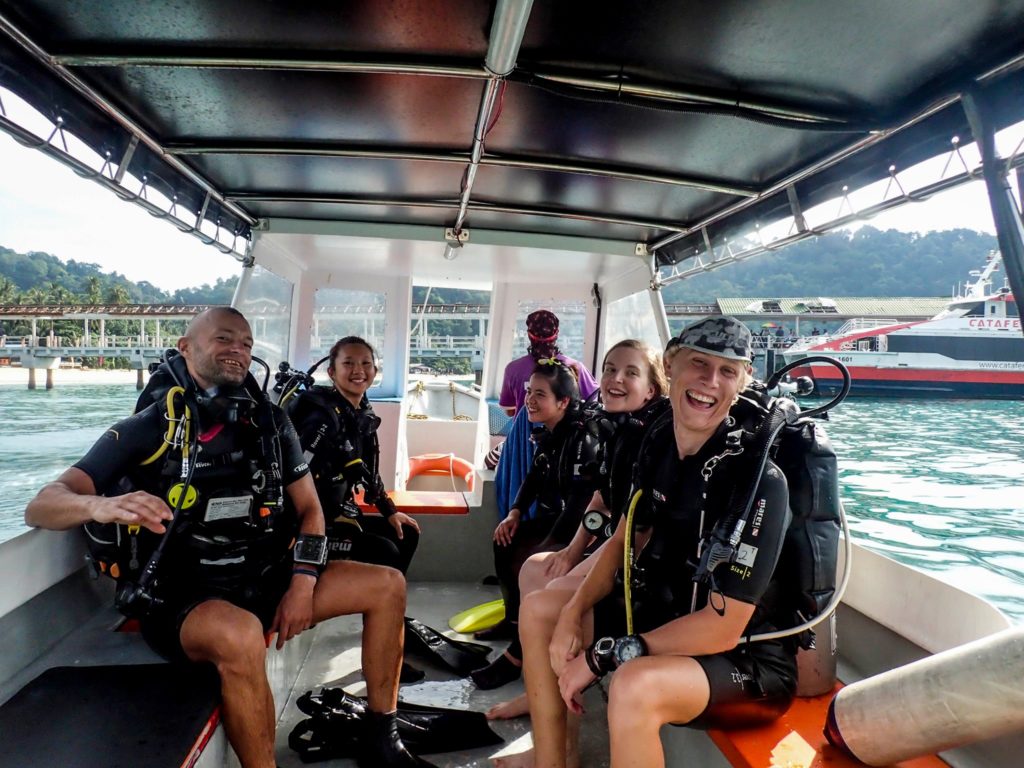
Advancing your scuba certificate
As you continue your adventures in scuba diving, start taking more advanced scuba classes.
With an advanced diving certification, night diving is a great way to see the true colors of the sea. A deep dive up to 30 meters below the surface is also possible with more advanced certification.
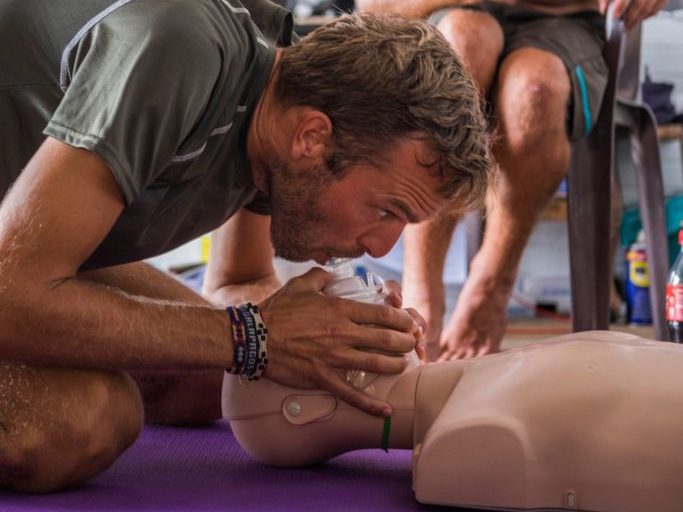
As a result of some spontaneous pursuit, I become interested in scuba diving. This led to the creation of my family with my wife who was going home at that time on an island where I just happen to be with her studying for the advanced open water diver class.
Divemasters are the first professional level in a career that gives you a license to work for a dive shop. Instructors are self-evidently didactic in more than just their job. One good thing about this career is you’re making a living doing what you love.
You may think being a diver and traveling the world is amazing, but there are also risks. Jacques Cousteau said, “The sea, once it casts its spell, holds one in its net of wonder forever.”
Where can I dive with sharks?
Diving with a diving certification to go diving with whale sharks however it’s not the easiest diving you can do for your first time. It’s best to get in with a diving shop and divemaster or dive instructor who knows what they are doing and can watch out for you while diving and make sure that big whale shark doesn’t eat you!
Here are the best places to find sharks and when is the best time to dive with them. ng put me at risk for diving?
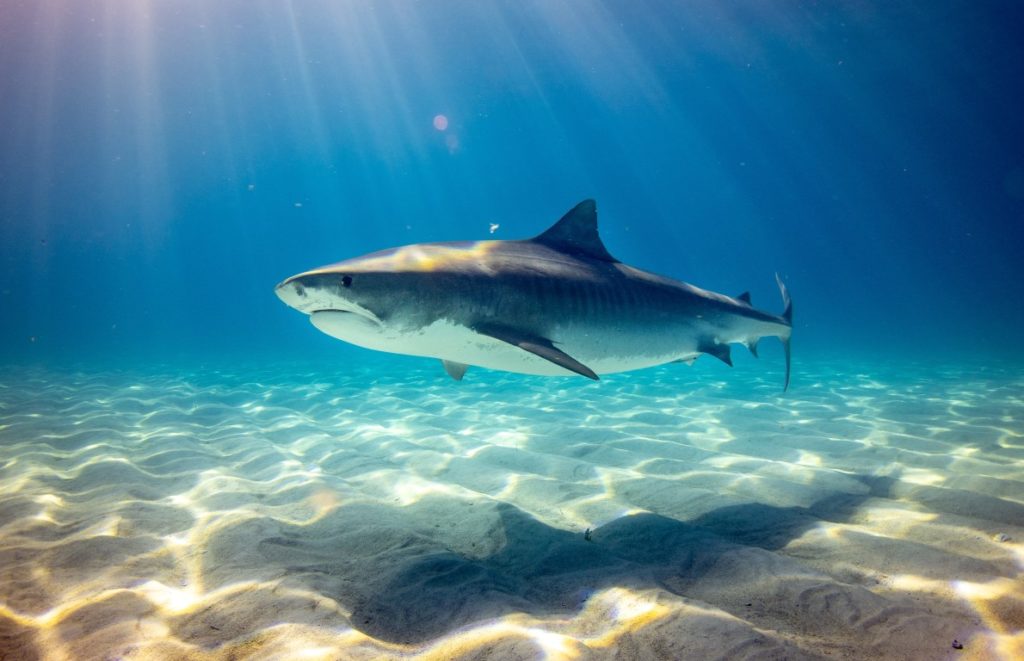
Conclusion
Scuba diving is one of the most amazing and rewarding adventures you can embark on.
Whether it be at home or while traveling abroad, getting your dive certification will help set you up for a lifelong love of this sport that has taken over our world.
If you’re ready to get started with scuba lessons in either location, we invite to join us today!
